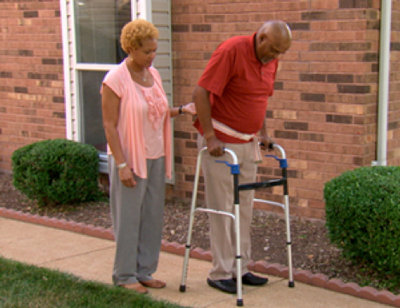
When this happens, the proper use of an assistive device, such as a walker can help a person walk more safely. A walker provides stability and security in walking.
A doctor or physical therapist should recommend a walker for the person you care for. The doctor will order a visit to a rehabilitation facility or ask that a physical therapist come to your home to evaluate the type of walker that will work best.
The doctor will decide how much weight the person can place on their affected leg. This is called weight bearing status. The type of assistive device used, such as a walker or cane, will be decided by how much weight the person can safely put on their weaker leg. Selection of the right assistive device also depends on a person’s age, strength, coordination, overall health, and ease of being able to move about.
Once you know the type of walker a person needs, the physical therapist or the staff of a medical supply store can help fit the walker correctly. When you care for a person who uses a walker, watch how the person stands and advances the walker. Compare what you observe with what this lesson teaches you about the proper way to use the walker. Then you can offer assistance as needed.
When you care for a person who uses a walker, watch how the person stands and advances the walker.